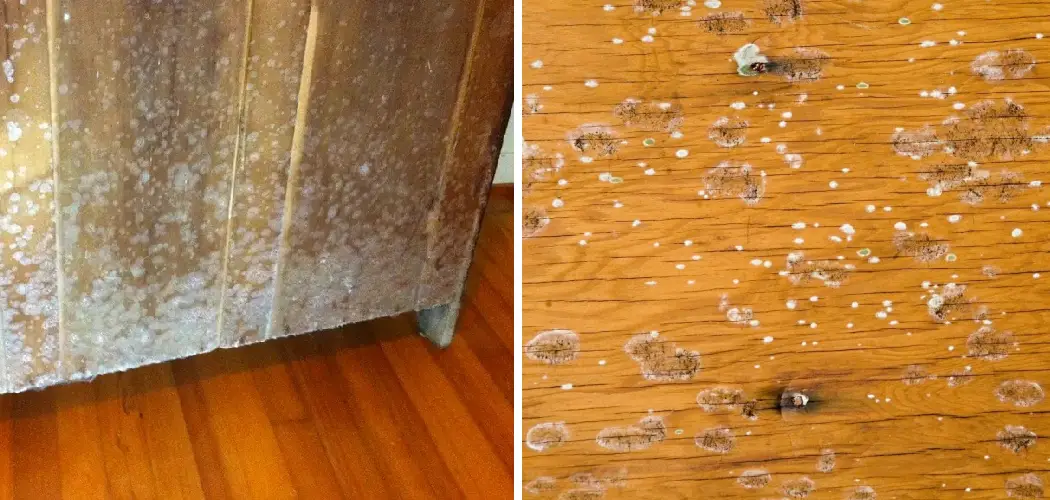Having a clean and healthy home is important for many reasons. One of those reasons is to prevent mold growth, especially on wood surfaces like furniture or wooden structures in the house. Mold can not only ruin wood surfaces, but it also poses health risks — it can lead to respiratory problems, irritate skin and eyes, trigger allergies, and cause other illnesses if left untreated.
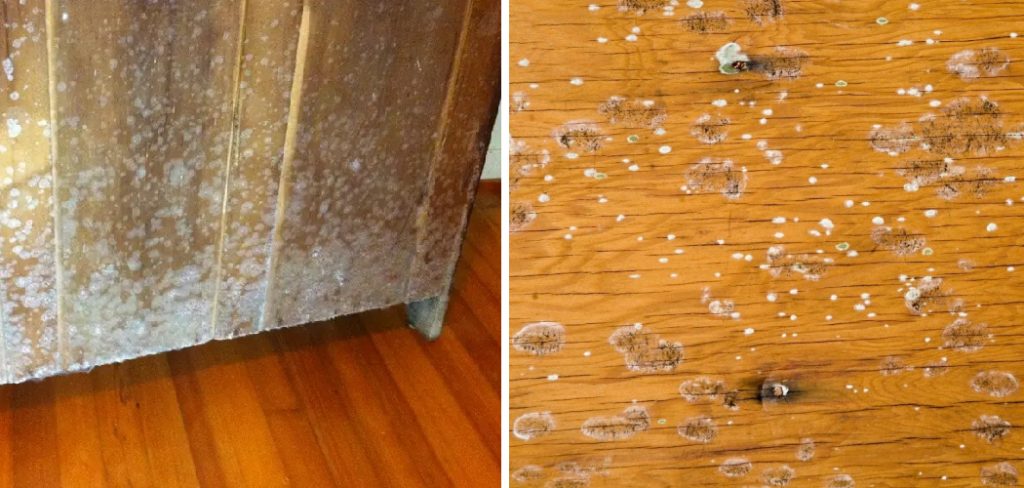
To ensure that you’re keeping your family safe from potential health concerns associated with mold growth on wood in your home, consider taking some proactive steps to prevent this common problem before it becomes an issue. In this post, we’ll outline what you need to do if you want to know how to prevent mold on wood to stop mold from growing on the wood inside your house and how best to protect these valuable possessions over time.
What Causes Mold to Grow on Wood?
1. Humidity
Mold spores occur naturally in the air and can take hold on any type of surface — including wood. The two main factors that lead to mold growth on wood are high humidity levels and moisture. If humidity levels in a home reach greater than 55 percent, it’s very likely that mold will start to appear. Additionally, if water or another form of liquid is left standing on a wooden surface for too long, the moisture will help activate mold spores and cause them to start growing.
2. Temperature
In addition to humidity levels being too high in space, an ideal temperature range of 60-86 degrees Fahrenheit — which is considered optimal for fungal growth — should also be avoided if you want to prevent mold from forming on wood surfaces.
Required Items
1. Dehumidifier
To prevent mold on wood, make sure to keep the humidity levels in your home below 50 percent. A dehumidifier is an excellent way to regulate indoor air moisture and control the level of indoor humidity. This device will help you maintain ideal conditions inside your house and prevent mold from growing on wooden surfaces.
2. Fans
Proper air circulation is essential for keeping mold from forming. Using fans to move the air around can help reduce humidity levels and prevent condensation buildup, which are two of the main things that enable mold growth.
3. Cleaning Supplies
Cleaning your wood surfaces regularly with the right cleaning supplies can also go a long way in preventing mold from growing. Make sure to use a mild detergent and warm water, as harsh chemicals can damage the wood over time.
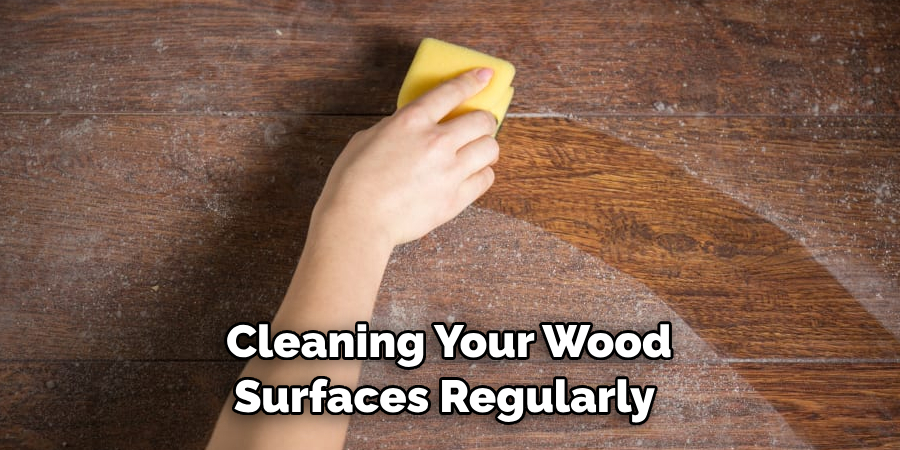
10 Ways How to Prevent Mold on Wood
1. Reduce Humidity Levels
To prevent mold growth on wooden surfaces, the best thing you can do is make sure that humidity levels in your home remain below 50 at all times. Investing in a dehumidifier and running it periodically, especially in problem areas like basements or laundry rooms, can help keep the levels low and reduce the chances of mold taking hold.
2. Increase Air Circulation
Using fans to increase air circulation, especially in areas with higher humidity, can also help prevent mold from growing on wood surfaces. Place one fan in each room that you want to protect and make sure they are running during the day — this will help move air around and reduce the moisture that mold needs to survive.
3. Clean Regularly
Cleaning wooden surfaces regularly, at least once a week — is also recommended for preventing mold growth. Make sure to use mild detergents and warm water when cleaning, as acids or other harsh chemicals can damage the wood over time.
4. Check for Leaks
Make sure to check for any water leaks or spills inside your home and act quickly to clean them up. This will help reduce the chances of moisture buildup, which can lead to mold growth if left unattended.
5. Ventilate Closets and Cupboards
Storing items in closets or cupboards can increase the humidity levels in a room and lead to mold growth. Make sure to ventilate these areas regularly using fans or open windows and doors if possible.

6. Fix Leaky Pipes
Leaking pipes are one of the most common causes of moisture buildup in a home which can lead to mold growth on wood surfaces. If you find any leaking pipes, make sure to fix them as soon as possible to reduce the chances of moisture accumulating in the area.
7. Use Mold-Resistant Building Materials
If you’re renovating or building a new house, opt for materials that are mold resistant, like treated wood or metal. These materials are designed to resist mold and will help keep your home safe from any potential problems associated with mold growth.
8. Keep an Eye Out for Water Damage
Be on the lookout for any water damage in your home, such as peeling paint, discoloration of walls or flooring, and other signs of moisture buildup. If you notice any of these symptoms, it’s important to take action quickly by cleaning up the area and drying out the moisture before any mold growth can take hold.
9. Replace Wet or Damaged Wood
If the wood in your home is wet or damaged, it’s important to replace it as soon as possible. Otherwise, mold could start to form in the area and quickly spread throughout your house.
10. Clean Air Vents Regularly
Air vents can often become clogged with dust and debris, leading to moisture buildup which can lead to mold growth. To prevent this problem, make sure to clean your air vents regularly using a vacuum cleaner or brush.
These are just some of the steps you should take if you want to know how to prevent mold on wood in your home. By following these tips, you can ensure that your valuable wooden possessions remain safe and protected from any potential mold-related problems. Taking these preventive measures now will save you time and money in the long run!
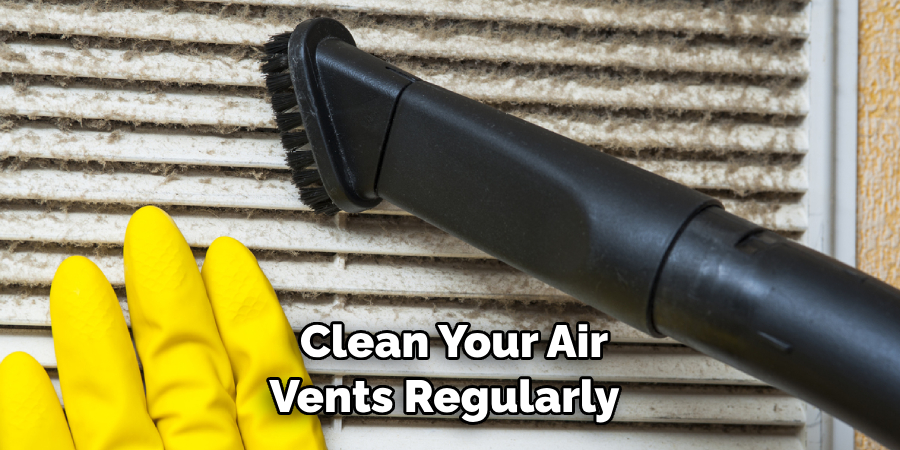
8 Maintenance Tips
Mold can cause extensive damage to wood and wooden structures, so it’s important to take steps to prevent or eliminate existing mold growth. Following a few simple maintenance tips can help keep your wood safe from mold:
1. Monitor humidity levels in the area around the wood. High humidity encourages mold growth, so keeping humidity below 50% is ideal. It is important to regularly check the humidity level with a hygrometer and use dehumidifiers or fans as needed.
2. Clean wooden surfaces often. Dust, dirt, and organic materials such as food crumbs provide an ideal environment for mold growth. Regularly wiping down wood surfaces with a damp cloth or disinfectant can help reduce the chances of mold growth.
3. Repair any water damage immediately. Mold can start to form within 24-48 hours of a water leak, so it is important to repair any water damage as soon as possible. If the wood has already been damaged by mold, replacing affected boards or sections may be necessary.
4. Seal outdoor wooden structures with waterproof sealant. Exterior wooden surfaces can be particularly vulnerable to mold growth due to water exposure. Sealing the wood with a waterproof sealant such as paint or varnish will help protect it from moisture and therefore reduce the chances of mold growth.
5. Perform regular inspections of wooden structures for signs of mold. Check for dark spots, discoloration, musty odors, or other signs of mold growth. If any mold is present, take immediate action to treat it and prevent further growth.
6. Use a dehumidifier in areas where wood is stored or exposed to moisture. Dehumidifiers can help reduce the amount of moisture in the air, making it less likely for mold to form on wood. Dehumidifier is especially important for basements, attics, garages, or other enclosed areas.
7. Make sure wood is properly treated and stored when not in use. If wood is going to be unused for a while, it’s important to make sure that it is sealed with waterproof sealant and kept in a dry area where mold doesn’t have the chance to grow.
8. Use mold-resistant products when necessary. If the area is particularly prone to mold growth, using mold-resistant products such as treated lumber or sealants can help prevent the growth of mold on wood surfaces.
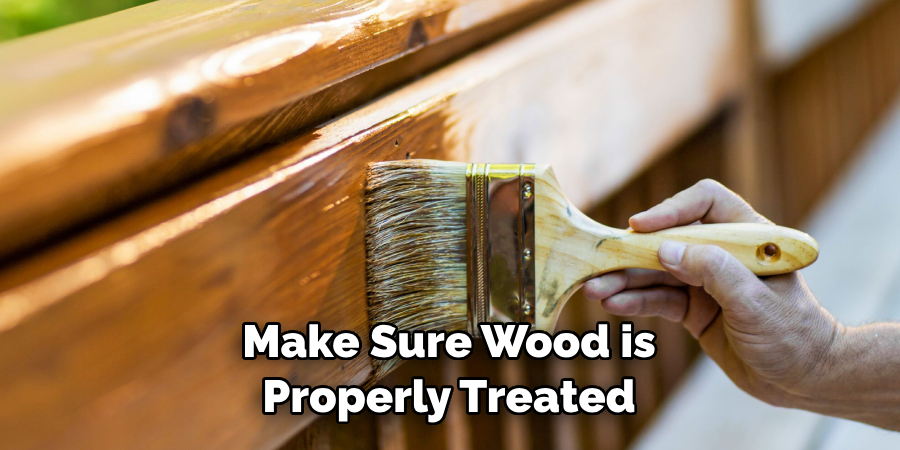
By taking preventive measures and regularly inspecting wooden surfaces for signs of mold, you can reduce the chances of having to deal with a mold problem in the future. Taking these steps can help keep your wood safe from mold and free of damage.
Conclusion
By following the tips on how to prevent mold on wood outlined in this blog, you can help prevent mold on wood and keep your furniture looking as good as new. Now that you have all the right tools and knowledge to protect your wooden items don’t waste any time getting started! Make sure to clean surfaces often with a damp cloth; inspect for dampness regularly; use mild cleaning products like vinegar or baking soda; and avoid storing items in humid spaces.
Fixing mold on wood doesn’t have to be an expensive process. With consistent maintenance, you can save yourself from a costly replacement in the future. If you need further assistance or guidance with removing mold from furniture, it is recommended to contact a professional for help. So take the initiative and act sooner than later – start preventing mold from forming on your wooden furnishings today!

